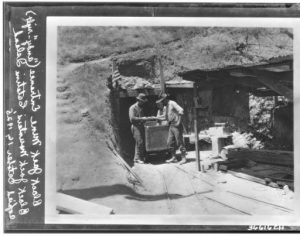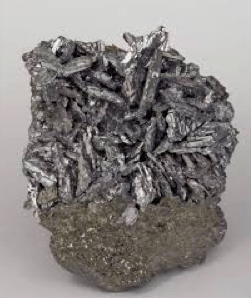
Catalina Island has a very long and unique history, from the Native American peoples who lived on the island for thousands of years, to the European settlers of the 16th and 17th centuries, and even the movie stars of the mid 1900s. One brief part of Catalina’s history that is often overlooked is the mining boom of the late 1800s and early 1900s.
Catalina had a brief mining rush that actually predates the California Gold rush. In the 1830s, a sea otter hunter and fur trapper named George C. Yount claimed to have discovered gold-bearing quartz in the hills of the Cherry Valley cove. Most people at the time didn’t take the discovery as lightly as Mr. Yount: he only returned to Catalina three times in search of gold, but news of his discovery eventually led to a mining boom on the island.
 George C. Yount, or should we say… “The Goldfather?”
George C. Yount, or should we say… “The Goldfather?”
Many prospectors flocked to Catalina in search of riches, and found it quite easy to stake a claim and squat on the mostly-uninhabited island. The chances of striking a motherlode on Catalina seemed high, with many prospectors finding traces of silver and hoping it would lead them to a vein. Unfortunately for most miners, there weren’t any veins of pure silver ore, but instead major deposits of galena, which is a combination of Lead, Zinc, and Silver.
 A combination of galena (silver) and quartz (white), a likely find in a mine like Black Jack (MineralsBulgaria.com)
A combination of galena (silver) and quartz (white), a likely find in a mine like Black Jack (MineralsBulgaria.com)
Galena itself did have some value, but not to the average prospector — and the mining boom on Catalina faded fairly quickly. Some mines on Catalina continued to operate throughout the years, mining for galena at places such as Black Jack Mountain and Silver Peak, the second and third highest points on the island.
The name Black Jack itself comes from another mineral that is usually found in association with galena, sphalerite. The nickname “black jack” comes from the dark appearance of this “junk” mineral that was often found attached to more valuable lead ores.

Galena with sphalerite (zinc sulfide or “black jack”), quartz, and pyrite (Minfind.com)

When the stock market crashed in the 1920s and the Great Depression hit the United States, the last of the mining operations ceased and mining on the island disappeared, leaving nothing except for a few holes in the ground as evidence of the Catalina boom.



